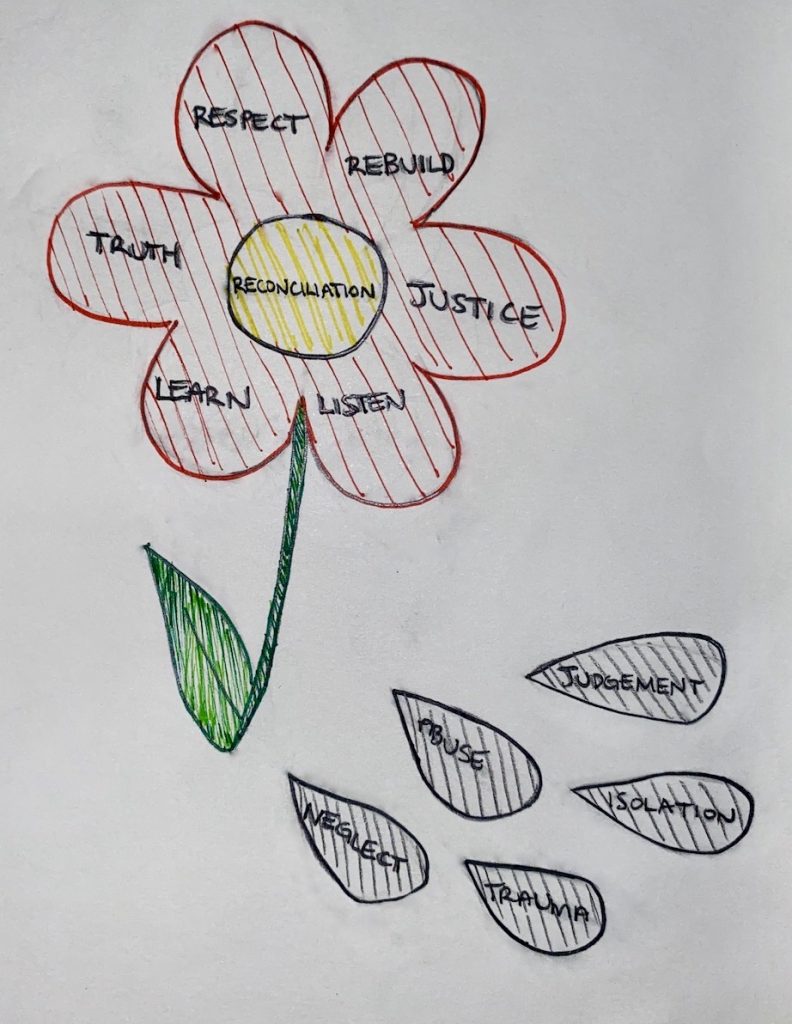Journey Towards Reconciliation: Opening My Eyes to Indigenous Truths

For my aesthetic representation, I created a visual that embodies my overall feelings towards reconciliation. I drew a flower to represent the fragile nature of reconciliation and past Indigenous events. The healthy petals that are still attached have the words Respect, Rebuild, Truth, Learn, Listen, and Justice. These words represent how I believe we need to approach reconciliation as, throughout my journey towards reconciliation, these words positively connected to reconciliation and gave me hope of a more favourable future. I believe that all of these words and attitudes are needed in order to build new relationships, and better our approach to reconciliation going forward. The dark, dead flower petals have the words Neglect, Abuse, Isolation, Judgement, and Trauma attached to them. These words represent the negative effects of past events such as the residential school system. While we do not sweep these words away, as we do not want to forget that these things happened; we do not want them to continue drawing life out of the plant.
In most journeys, one arrives at a destination and that is generally considered to be the end of that journey. I believe that the journey towards reconciliation, at least for me, will not follow this typical idea. My journey started with what I consider now to be very basic knowledge of residential schools as I certainly did not fully understand their impact. Acknowledging the indisputable effects of residential schools on generations of Indigenous peoples, and the continuing risk to future generations guarantees that my future as an educator will require me to ensure an accepting, safe, and culturally embracing classroom. It is my responsibility to see the student through a lens that looks beyond the curriculum and understand how their diversity and unique individual story impacts their learning. I must provide the invitation and hospitality to a classroom where everyone’s truth is learned and acknowledged such that, unlike my own experience, the true history of Canada is taught. This approach will help me answer the Truth and Reconciliation Committee’s Calls to Action for Education, most notably point 63, which aims to share best practices for teaching and building understanding, empathy, and mutual respect amongst students (Niessen, 2017, p. 12), thus allowing the healthy petals of my flower to thrive and my journey to continuously evolve.
References:
Niessen, S. (2017). Shattering the silence: The hidden history of Indian residential schools in Saskatchewan. Regina, SK: Faculty of Education, University of Regina.